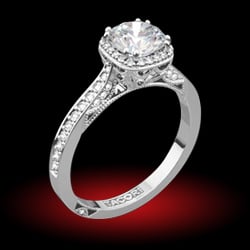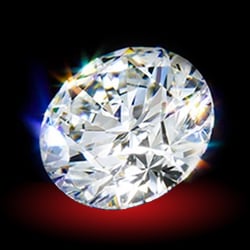As I mentioned in an earlier posting diamond technology in general and visual performance in particular is no rocket science.
The visual results obtained by the manipulation of crown and pavilion angles are well known and documented by both the diamond cutters and the GIA.
GIA research and development have done extensive research using Ray Tracing software
They can easily grade cut quality by visual performance.
Why then do the GIA make no comment to proportion and the resulting visual performance on their certs?
Why do AGS promote the Idea that the range of dimensions that produce optimum results is very narrow?
The reason is market share, As long as GIA withhold critical dimensional data they are assured of being the cutters choice,
The AGS targets the other end of the market all be it a much smaller market, This is the “Ideal Cut” fanatics that have made AGS a status symbol
EGL on the other hand achieve their market share by “soft grading”
Why do we say the HCA is a good tool for consumers but of no real value to cutters or the diamond trade?
While we applaud all efforts to help consumers make informed choices we found the mathematical macros very limiting.
The reason is the HCA is only taking into account at most 18 of a possible 58 facets. We have found that light return can dramatically change by manipulating the 40 minor facets (the star facets and upper and lower girdles) that are not considered by the HCA.
Our instrument of choice would defiantly be the Brilliance Scope as it shows the effect of light return when changes are made to any facet. It can easily tell you if a facet is acting as window or a mirror.
The Brilliance Scope does not base its results on calculations. It reads the actual light return
No instrument that doesn’t actually measure or test the individual diamond can provide accurate data.
If the item doesn’t actually “see” the diamond, it’s nothing more than math and guesswork..
The visual results obtained by the manipulation of crown and pavilion angles are well known and documented by both the diamond cutters and the GIA.
GIA research and development have done extensive research using Ray Tracing software
They can easily grade cut quality by visual performance.
Why then do the GIA make no comment to proportion and the resulting visual performance on their certs?
Why do AGS promote the Idea that the range of dimensions that produce optimum results is very narrow?
The reason is market share, As long as GIA withhold critical dimensional data they are assured of being the cutters choice,
The AGS targets the other end of the market all be it a much smaller market, This is the “Ideal Cut” fanatics that have made AGS a status symbol
EGL on the other hand achieve their market share by “soft grading”
Why do we say the HCA is a good tool for consumers but of no real value to cutters or the diamond trade?
While we applaud all efforts to help consumers make informed choices we found the mathematical macros very limiting.
The reason is the HCA is only taking into account at most 18 of a possible 58 facets. We have found that light return can dramatically change by manipulating the 40 minor facets (the star facets and upper and lower girdles) that are not considered by the HCA.
Our instrument of choice would defiantly be the Brilliance Scope as it shows the effect of light return when changes are made to any facet. It can easily tell you if a facet is acting as window or a mirror.
The Brilliance Scope does not base its results on calculations. It reads the actual light return
No instrument that doesn’t actually measure or test the individual diamond can provide accurate data.
If the item doesn’t actually “see” the diamond, it’s nothing more than math and guesswork..







300x240.png)